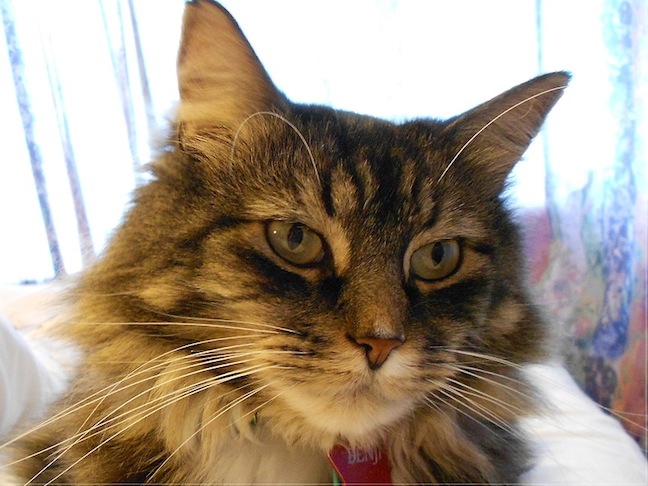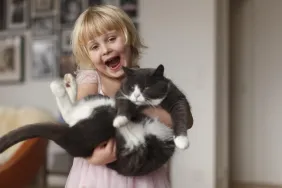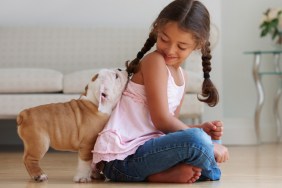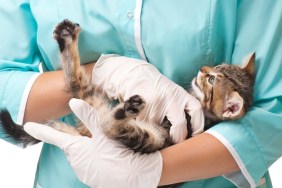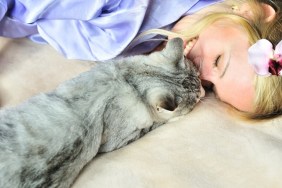While most of us know that a purring kitty is a contented one, some signals are less obvious to decipher. Here we’ll take a look at some sounds and movements cats make and what they could mean.
Meows And Chirps
Cats mainly meow at their owners to get their attention, for example if they’re hungry. Chirps on the other hand are usually a pleasant acknowledgement or a “hello” type greeting.
Hiss
A hiss is an aggressive sound, intended to intimidate another party into backing off. Should this warning be ignored the cat will more than likely lash out.
Chattering
If you’ve ever noticed your cat looking out the window and making a chattering (almost laughing) sound, the cat is more than likely watching a bird or other prey.
Purrs
While purrs often mean a cat is relaxed, some cats purr when they’re stressed. My cat Benji (pictured) purrs when a vet is examining him and I’m pretty sure it’s because he’s trying to calm himself down in a stressful situation.
Eyes
When cats are about to pounce their pupils dilate, increasing the amount of light they take in and helping them hunt more effectively. Your cat may do this when he’s playing with a toy. If your cat is slowly blinking his eyes while looking at you, it means he’s feeling happy and comfortable with you.
Tail Position
You can tell a lot about your cat from his tail. An upright tail means your cat is feeling confident, but a lowered tail can mean he is unhappy or frightened. If your cat holds his tail upright and it quivers, he’s really happy and feels comfortable with you. A cat who is in an aggressive mood usually swishes his tail rapidly. This motion can also happen when a cat is preparing to pounce on his prey, or a toy. If your cat’s tail appears large and fat, with the hair all standing out, he is frightened. This may be accompanied by an arched back, and the hairs on the cat’s back could also stand on end. This makes the cat appear bigger, which will hopefully scare off his enemy.
Ears
Like the tail, cats’ ears are a great indicator of mood. Ears that are pricked upwards and twitching mean your cat is alert and paying attention to his surroundings. If the ears are flat he may be frightened or feel threatened. Ears which are turned backwards signify an aggressive cat who may be getting ready to attack, or defend himself.
Kneading
Often accompanied by purring, kneading, or treading with the paws, signifies your cat is feeling comfortable. He may knead you, or something he’s preparing to sleep on like his bed. When kittens are nursing from their mothers, they use this same motion to stimulate the flow of milk, so the motion is associated with comfort for cats. If your cat kneads you, he is obviously very fond of you.
Rubbing
Cats rub against you to mark you as “theirs”, so it’s usually a sign of affection if a cat does this. Gently pressing their forehead against you is another sign of affection.
